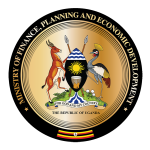DPI Governance Structure
DPI Programme Governance Structure
The governance of the Development Plan Implementation (DPI) Programme is structured into three levels to ensure effective coordination, oversight, and execution of programme activities. These levels are:
- The Leadership Committee (LC)
- The Programme Working Group (PWG)
- The Technical Working Groups (TWGs)
These structures bring together government institutions (MDAs/LGs), development partners (DPs) and civil society organizations (CSOs) at various levels to drive programme implementation. The DPI Secretariat provides coordination and administrative support to facilitate smooth operations across all levels.
1. The Leadership Committee (LC)
The Leadership Committee (LC) comprises high-level political leaders, including Ministers and Board Chairpersons of key institutions involved in the programme. This committee provides strategic oversight and ensures policy-level coordination and monitoring of programme progress toward set targets. Additionally, the LC is responsible for enforcing accountability by Programme Working Group (PWG).
Composition of the Leadership Committee:
- Chairperson: Minister of Finance, Planning, and Economic Development
- Minister, Office of the President
- Minister, Office of the Prime Minister (OPM)
- Minister, Local Government
- Minister of Public Service
- Chairperson, National Planning Authority (NPA) Board of Directors
- Chairperson, Uganda Bureau of Statistics (UBOS) Board of Directors
- Auditor General
- Chairperson, Uganda Revenue Authority (URA) Board of Directors
2. The Programme Working Group (PWG)
The Programme Working Group (PWG) serves as the highest technical organ of the programme, overseeing the development and implementation of key programme components.
The PWG is chaired by the Permanent Secretary/Secretary to the Treasury (PS/ST), with membership drawn from:
- Permanent Secretaries and Heads of Institutions from MDAs contributing to the programme
- Representatives from Development Partner Groups (DPGs)
- CSOs and Private Sector stakeholders relevant to the programme
Key Responsibilities of the PWG:
- Developing Programme Implementation Plans
- Preparing Programme Budget Framework Papers (PBFPs)
- Compiling Quarterly, Semi-Annual, and Annual Programme Performance Reports
- Formulating the Medium-Term Budget Strategy
- Submitting key documents for Leadership Committee (LC) approval
3. The Technical Working Groups (TWGs)
Given the broad scope of the PWG and the large number of institutions involved, Technical Working Groups (TWGs) are established to focus on specific sub-components of the programme. This structure allows strategic discussions at the PWG level while ensuring detailed planning, coordination, and monitoring within TWGs.
Each TWG consists of members from various institutions, including external partners (DPs, private sector actors, and CSOs) where necessary, to foster technical dialogue and collaboration.
DPI Technical Working Groups (TWGs):
1: Revenue Mobilization and Budgeting
Focuses on improving public financial management, budgeting processes, and revenue mobilization strategies.
2: Development Planning, Research, and Statistics
Strengthens the use of data and research to inform policy planning and decision-making.
3: Oversight, Implementation Coordination, and Results Monitoring
Enhances programme execution, coordination, and performance tracking to ensure results-driven implementation.
4: Local Government
Supports decentralization efforts and strengthens local governments in implementing development initiatives effectively.
Conclusion
The DPI Governance Structure ensures a well-coordinated, results-oriented approach to programme implementation which fosters collaboration between government, development partners and civil society to achieve NDP III objectives efficiently & effectively.
